I write as a frequenter of both the Braidense National Library and the Brera Art Gallery (also as a former friend of Brera), and as an art historian, with respect to the controversy stirred up by a video posted on Veralab’s Instagram profile, in which it depicted, with a disco background music and perfect film montage, an evening held in Brera to celebrate the first year of the beauty product brand Overskin founded by Ms. Cristina Fogazzi, also known as the influencer “The Cynical Beautician.”
It was undoubtedly a ceremony of considerable importance because of the costs (reported by Il Fatto Quotidiano as around 95 thousand euros and traceable to a ministerial fee schedule), which the company also incurred in order to ’launch’ itself on the Spanish market, convening Iberian influencers, makeup artists and makeup artists, beauticians and estheticians, as well as many Italian social VIPs. The video showed guests lingering next to Ms. Fogazzi, or filmed visiting the Pinacoteca Nazionale with a Brera employee. Her same guests would later dine at a table set up in a room of the Braidense National Library (the study/theological one); they would take pictures of each other next to the library shelves and try on beauty products in a space set up outside on the ground floor (near the Consagra space) where they would finally eat a take-out pizza and dance to the music of Dardust in the courtyard of honor, under the gaze of the marbles dedicated to Cesare Beccaria, Bonaventura Cavalieri, Verri, as well as sculptors, engravers and other illustrious subjects of Brera and Milan’s past.
This one in Brera was to be the second stage of two days of ’festivities’ that would begin, only one evening earlier, with a dinner-refreshment held in the so-called “salone Fontana” of Milan’s Museo del Novecento, that is, in a more recently established facility, likely equipped with air conditioning and more security and emergency devices than the Braidense National Library. In the Fontana hall, closed only for June 12, guests appeared somewhat distant from the artworks, of Lucio Fontana’s installations on the ceiling. On this evening, no video was circulated on the web by the Italian Veralab profile, and there does not appear to have been any online protests. Why this difference in attitude and the many online criticisms (in addition to those, unacceptable, issued by some profiles on the net that seem to be of a personal nature, addressed both to the guests and to Ms. Fogazzi) aimed only at the event at Brera and in particular for the dinner at the Braidense in which, precisely among the diners, director Crespi was present?



It is certainly not the first event that has been held in Brera or Braidense, or in an Italian state museum reportable to the Ministry of Culture, especially after that autonomy established by former minister Dario Franceschini between 2014 and 2015 that endowed the directors of these institutions with financial autonomy, ’forcing’ them not only to resort to optimizing ticketing, raising prices, implementing services (bookstores and cafes), but also increasing those systems to meet economic needs, maintaining the structure, but also increasingly renting out their spaces for events. Brera, in the two terms of director Bradburne and in the more recent one of Dr. Crespi, has always resorted to these systems to increase some revenue and cope with increasingly large operating costs (think only of utilities), hosting events mostly during the Salone del Mobile, or in Fashion Week, or for very particular celebrations of brands that seem more ’established,’ that is, older. It has also done so after the opening in 2018 of one of its bistros, Café Fernanda, that is, after the opening of an environment strictly devoted to the sale and distribution of food and beverages. In some cases, some of these events have caused a transitory interruption of public service and the main missions to which cultural venues are addressed, namely that of providing reading and study services (Braidense), as well as of promoting enhancement and enjoyment of their heritage (Pinacoteca), which is why many of these private events are often held during closed hours and days (however, this was not the case with the Brera event, which was held on a Thursday, according to a notice on the Braidense’s website). Neither the organizers of these events nor their communication seem to have forgotten, however, the role and vocation of the host structure, that is, to take greater care to respect the image of an institution that is first and foremost a seat of study and cultural production, not a hotel, nor a restaurant, or an occasional space for outdoor concerts or to be ’used’ for corporate identity initiatives, or brand identity, or for ’different’ positioning. No ’mystification of culture,’ but also no ’distortion,’ or ’amnesia’ regarding an identity that is and remains strong.
As a guest in the past of charity dinners at the Diocesan Museum in Milan, I have taken part in museum dinners, or buffets, but I must say that they were far different from the one I saw, as well as from other previous ones held at the Braidense and of which there are records. I was seated in those circumstances on chairs and at catering tables, in a freer room with no books around. Until now, no one had seen online the desks, chairs and lamps in the study room being used for ’eating on them’ or next to them, when indeed, until a few years ago, as was the case with the Accademia’s contemporary art library, there seemed to be a prohibition against bringing in food and drink, especially if volumes were being consulted, a requirement that as of today, on a quick glance, would no longer seem to exist in the Brera and Braidense regulations and charter of services posted on a new site. Little did it change that the desks had plates a plexiglass, or glass. At most, one has seen in the media ’using’ the reading room/theology rooms for publicity shots, not distorting its use and function, since a ’smart’ young woman studying there was shown wearing a skirt and tights of a well-known brand.
The dinners, until now, had mostly been held (or at least that is the impression given by the communication) in the much freer and easier Sala Teresiana, moving its showcases elsewhere. And this is what happened with Fendi in January 2023, or with “Moncler Genius” in February 2018, or more recently for the dinner convened for the 110th anniversary of V-Zug in April 2024. The last event, in particular, is the one that Ms. Fogazzi cites on social to ’defend’ herself against the criticism levelled at the event. With a photo posted on social of that dinner (which also featured some contemporary dancers) she almost wanted to claim that all the criticism was directed at her, or her brand, or to attack her event, her organization, or the Brera management, forgetting, or not knowing that the environment intended for those events appeared quite different. Just as the corridors of the Academy, used in 2015 to set up a dinner in the vicinity of the Salone del Mobile, or the same Napoleonic hall on the ground floor used in an event held for the 50th anniversary of Unifor (which, however, today seems to no longer grant the Academy), that is, in a room that, along with the Passion room (re-titled to the president of the Friends of Brera, Dr. Aldo Bassetti), until a few years ago, were the only spaces rented for dinners because they were free of much clutter and more accessible (and even air-conditioned).
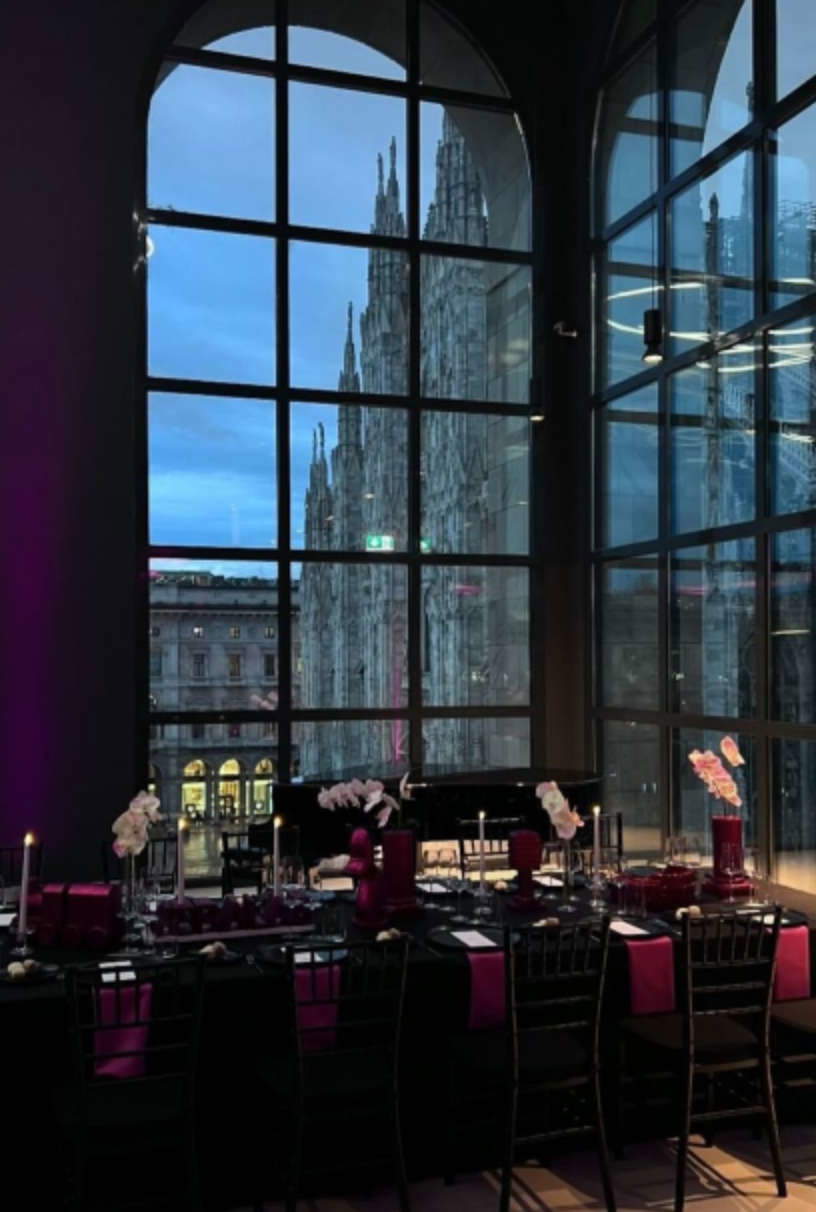
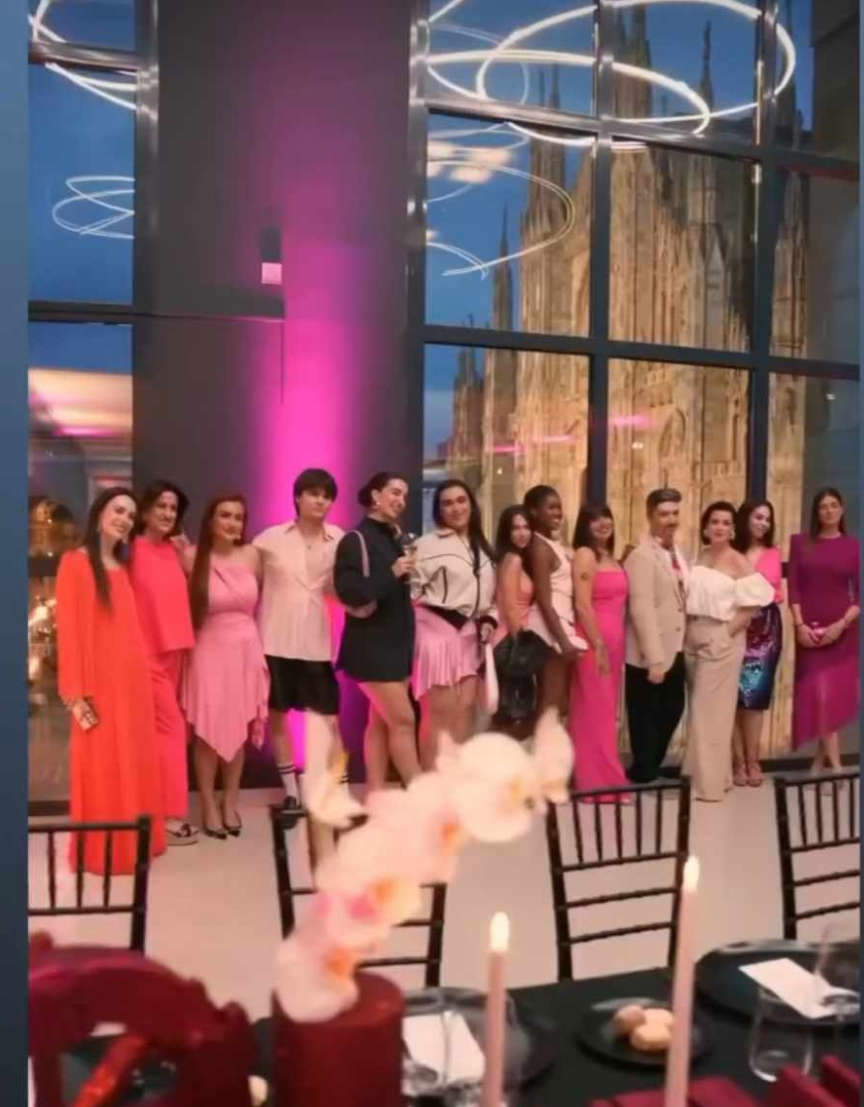

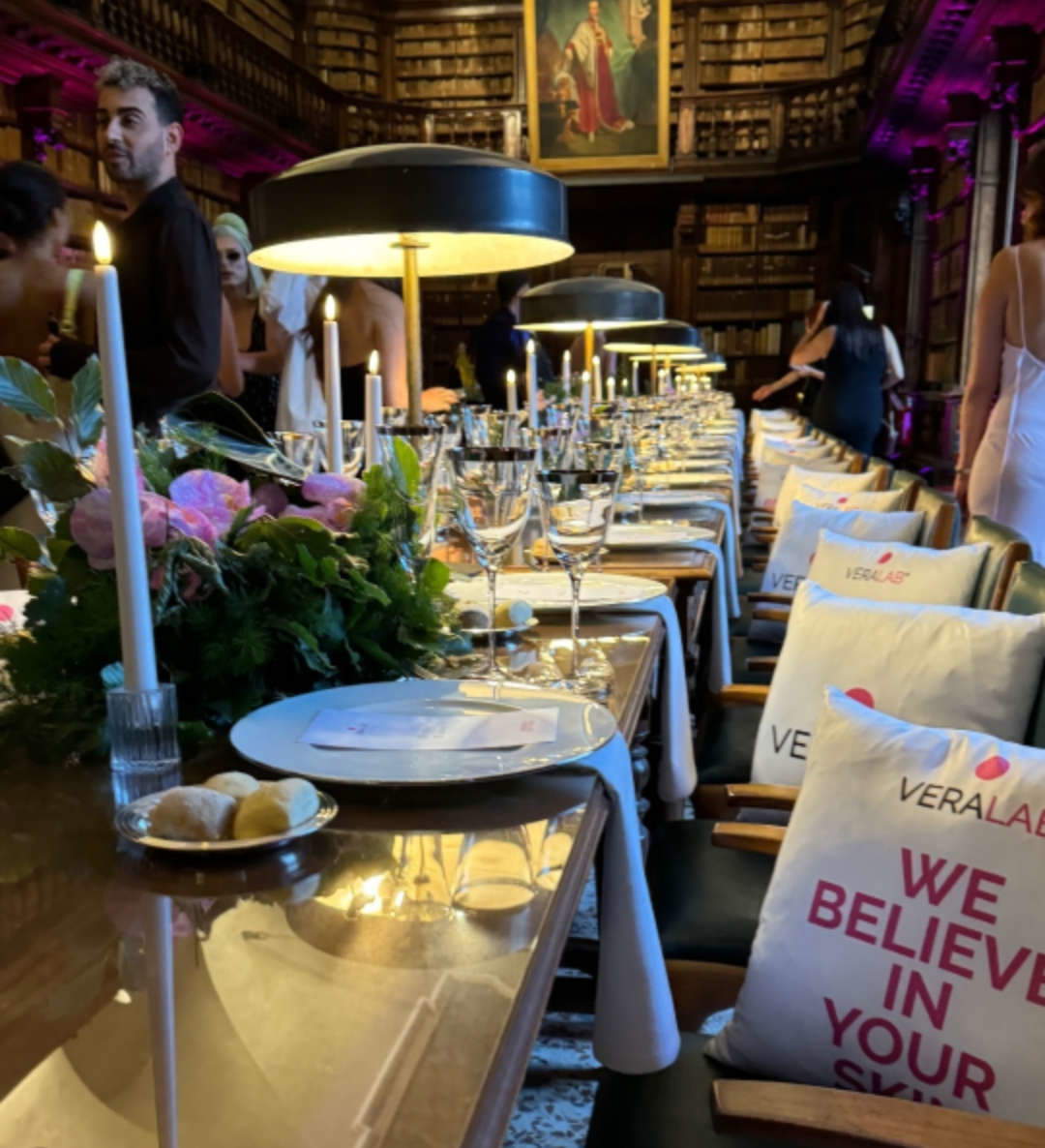
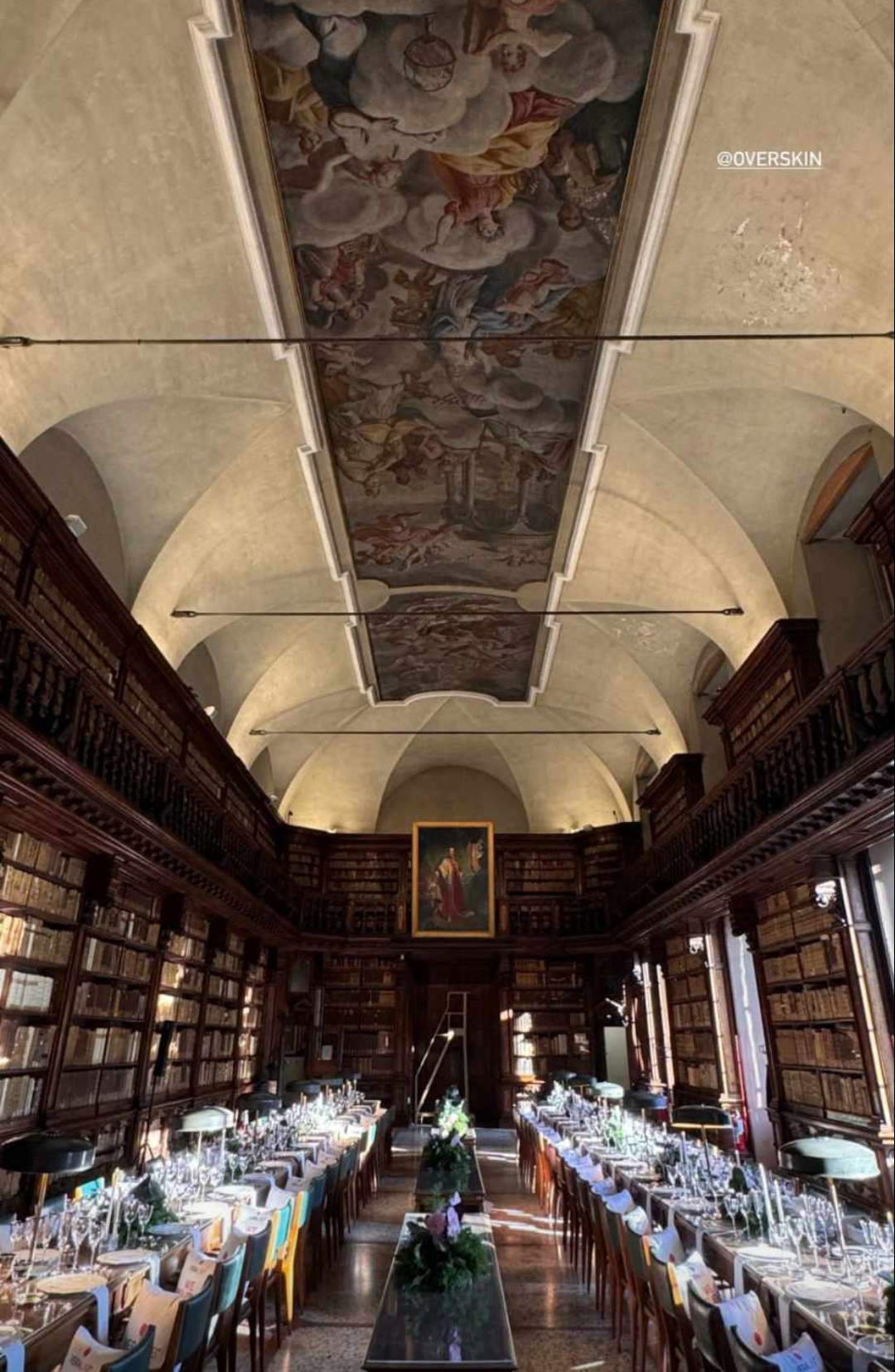
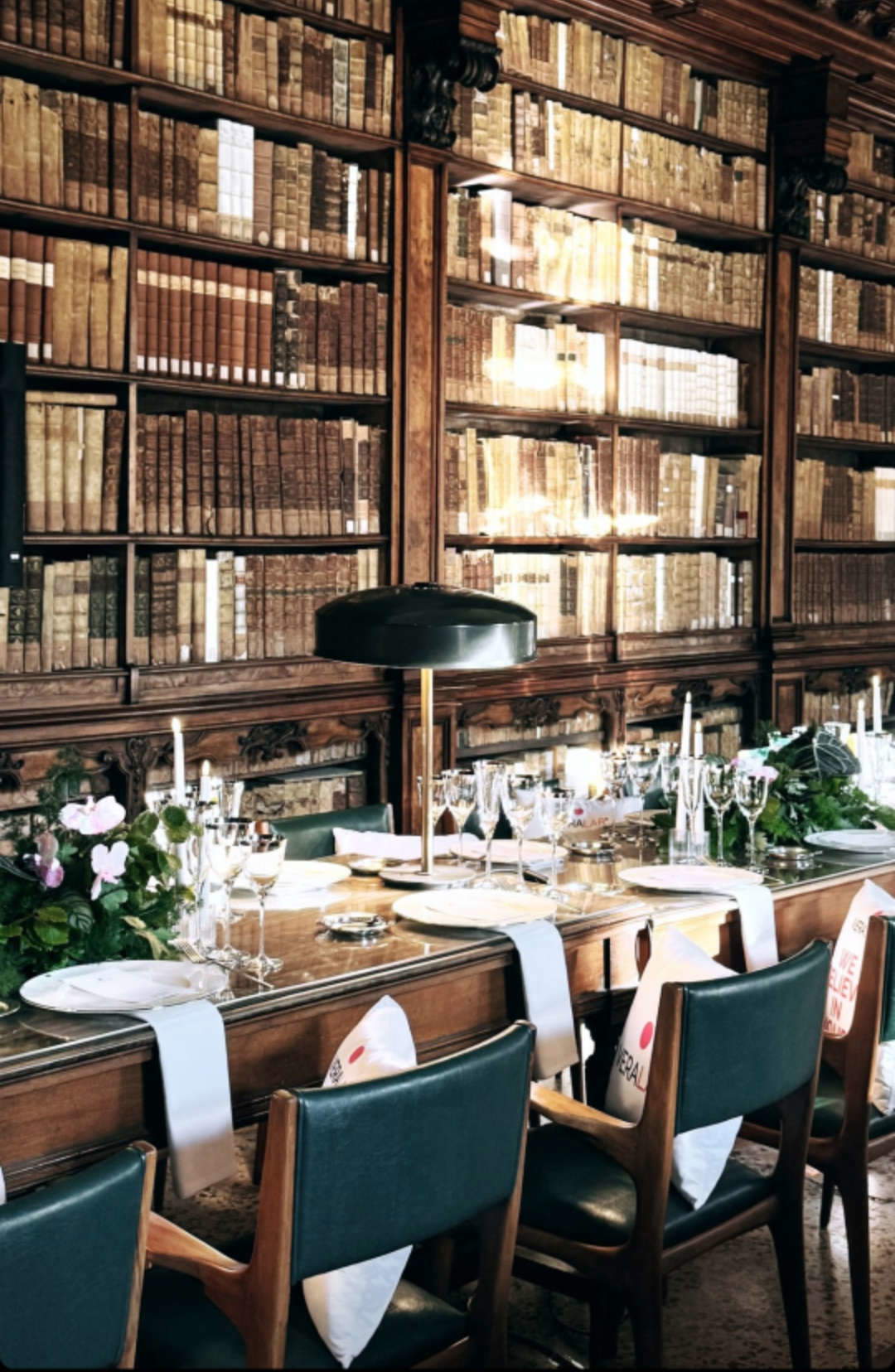
All of these events occurred by not moving, then, the tables in the reading room, which seems to be listed on the Braidense’s new website as a lendable space for events(not explicitly specifying the type, or the characteristics for these events to be considered compatible by all, as consonant with the image of the facility). It matters little that the candles on the tables were electric, battery-operated, as Ms. Fogazzi recalled yesterday. The fact always remains that any and all sparks, even those created by a tiny short-circuit, can be capable, if you’re not lucky, of quickly igniting, especially in an environment surrounded by tons of paper and where you may only have fire extinguishers to fight the flames. If some inconvenience had happened, even to a cell phone that had gone up in flames (something that can happen on a daily basis and for which some models have often been recalled), right during dinner, at an extraordinary closing, what would have been said? What would the press have said? Many might think that an insurance company will restore damage anyway, but an insurance company cannot restore a normal condition to a burned book. A volume, especially an ancient one, is unique, with a history all its own, and cannot be replaced in any way. If it is lost, it cannot be replaced, or rebuilt, as was done with museums and rooms bombed in Milan in 1943. The fact remains that we have all heard that Brera has granted for dinner, and perhaps will begin to grant, from now on, in an increasingly visible and Instagrammable way, the theological reading room and tables for dinner parties, deeming in these and other environments perhaps entirely ponderable risk factors there, such as having the shelves a few feet from the tables where food is served and consumed and against which guests can fall, tripping over any obstacle.
Other issues that Ms. Fogazzi somehow implied, or wanted to imply, is that her event and the “Spanish influencers” she called could help make Brera and the Braidense more known in the world and that Brera, therefore, does not count for much because it does not make the millions of visitors of the Uffizi. In short, as much as she then apologizes to the Brera staff for the situation in which they were caught up because of the criticism of this event, on the other hand she proposes Brera in a kind of comparative advertisement with the Uffizi based on numbers. Ms. Fogazzi publishes a statistic reported on a Wikipedia page, regarding data from 2022 (and perhaps referring to 2021 and that is to an immediately post-pandemic, under-performing phase) of the art gallery, overlooking that the latest numbers, those of 2023, are about 470,000 users (excluding those of the library which were about 250,000 in 2022). The same fails to consider that the Uffizi consists of about three locations (the Boboli Gardens and the Pitti Palace are also part of the circuit) and that Brera, especially under Bradburne, had decided to allow its visitors easy access to that museum to appreciate the works of the picture gallery that is and has been known in Italy and Spain since time immemorial. The architect Giovanni Brocca, who taught in the 19th century at Brera and who was a friend of painters such as Pelegrin Clave y Roqué, was portrayed by Francisco Madrazo y Kunz, by what we might consider the Spanish Hayez, and the sketch is in the Prado’s drawing cabinet. And from the 19th century onward public museums such as Brera, mostly state institutes linked to those academies that were perhaps the first and most important contemporary promoters of a new way of creating, of producing art, which increasingly broke the centuries-old relationship between the ’artist and the private patron, seeing the emergence of the figure of the artist who works for the market and its system, or even for a public patronage in major works.
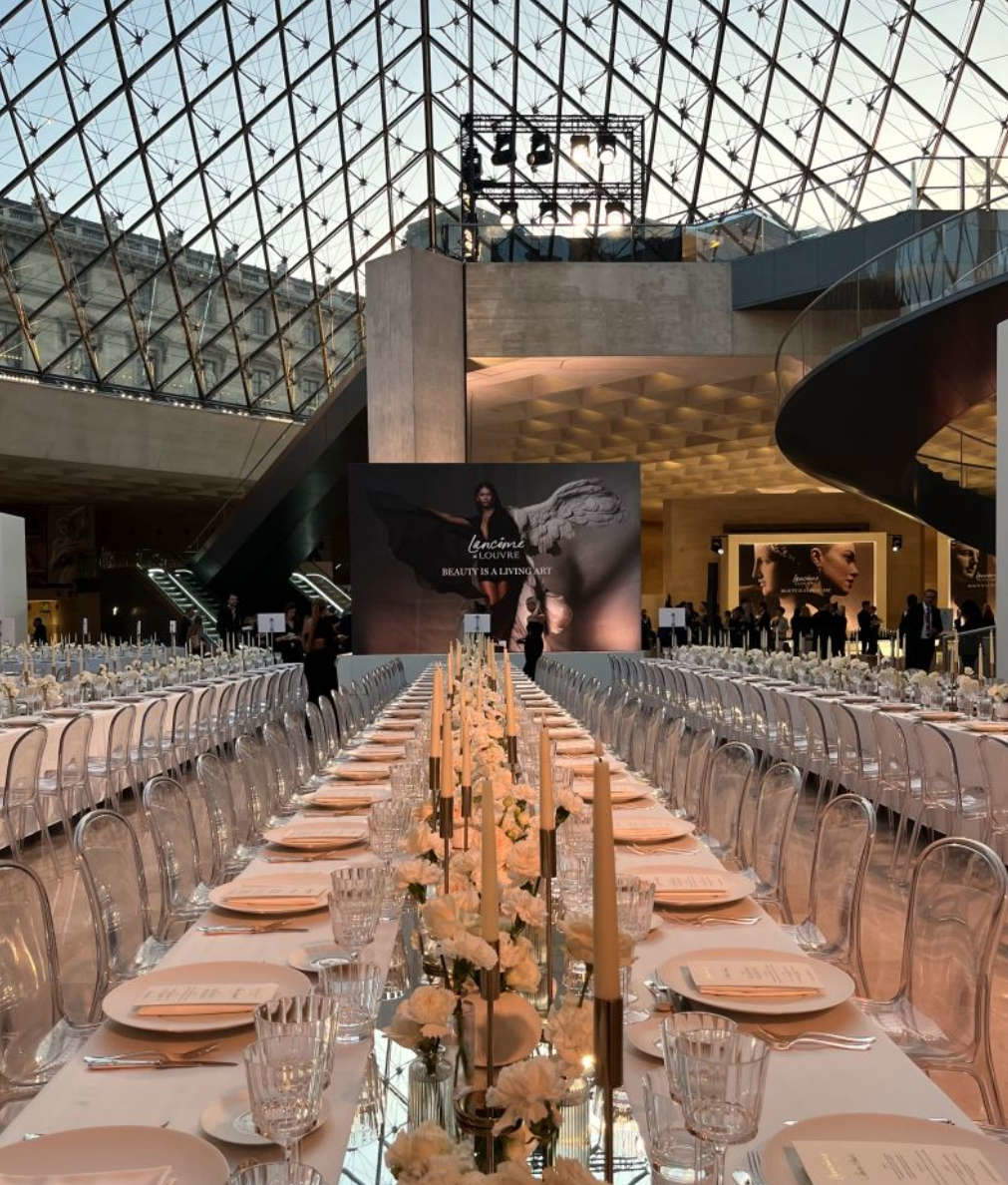

The same Ms. Fogazzi, who allegedly gave some of her clients tickets to visit Brera (a possibility provided until not too many years ago by other brands such as Benfit), or who would have liked to organize there the party for her next 50 years (we all hope that she could do this action to contribute again to the activities of the library, perhaps thinking of organizing something in Palazzo Citterio, or at the Botanical Garden as done by Guzzini), perhaps he forgets the great controversy that there was with the presentation of a Trussardi collection, in the picture gallery, in 2017, a parade judged by many as inappropriate, especially after the museum and director Bradburne had shown themselves a few days earlier unprepared to deal with an extraordinary event that had already occurred in 1989 that led to the damage of about 40 works.
We hope to hear from the director of Brera, rather than from the company that organized the event, something more than what for many seemed a “miscommunication,” keeping in mind that cosmetics brands such as Lancôme, a partner of the Louvre, did not hold a dinner in in the museum’s galleries (where patrons are mostly hosted for their annual dinner instead), or in a library, but in a newer service facility such as the iconic Pei Pyramid.
Warning: the translation into English of the original Italian article was created using automatic tools. We undertake to review all articles, but we do not guarantee the total absence of inaccuracies in the translation due to the program. You can find the original by clicking on the ITA button. If you find any mistake,please contact us.